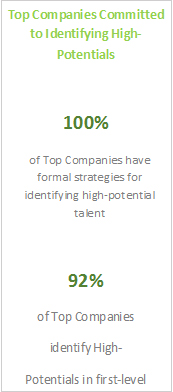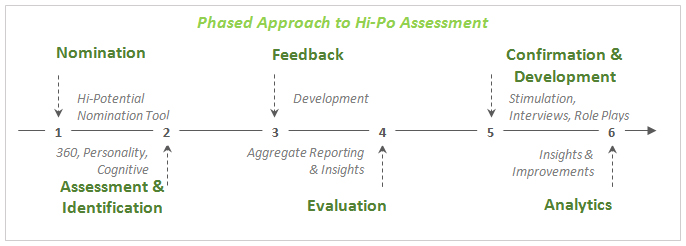High-Potential or No Potential?
29 Nov 2017 by Tarandeep Singh and Vishal Singh
High-Potentials are an organization’s most coveted resources. It is well recognized that they help ensure growth, innovation and effective succession planning. Today, “HiPo” has taken its place alongside “engagement,” “bandwidth,” “sustainability,” and “transparency” in the 21st century corporate lexicon. However, many organizations do not define what exactly it means to be a High-Potential and how to manage them efficiently.
Struggle with Defining High-Potential
Why is it that many companies still stumble in this process while top companies deliver consistent success stories? Here’s what Aon found:
- Confusion between High-Potential and High Performing employees: It is entirely possible for a high performer to not be High-Potential material due to a variety of reasons. These can range from not having the wherewithal to manage inter business-unit relationships to simply not having the interest to progress to high responsibility leadership roles.
- Failing to discuss aspirations: Many organizations fail to engage in a critical discussion that we call “Talent Conversation”. This is a continuous process to keep a tab on factors like an employee’s depth of ambition, life stage compulsions and integration with organizational requirements. Awareness of these is critical to maintain an employee’s progression within the company.
- Neglecting to clearly & consistently define High-Potential: Standardization of Hi-Po definition for each level is critical to eliminate biases and subjective evaluations of reporting officers. Transparency of these standards is critical to remain fair and also appear fair to every employee.

The financial and managerial cost of these typical errors can be substantial. What is required is a definitive set of tools, processes and well defined structure to tackle each of the factors mentioned above.
The A3 Model of Leadership Potential
An individual has to imbibe a number of qualities to be considered “Leadership Material” – expertise and ability are not enough. One has to keep in mind that a robust model for defining Leadership Potential has to stand the test of time through changing circumstances. Therefore, a holistic process that employs solid psychometric instruments and rich talent conversations with managers and their employees is essential.
Aon’s A3 Model focuses on three critical aspects – Ability, Agility & Aspiration.
Ability holds up a lens to an employee’s skill sets along with cognitive & emotional abilities.
Agility analyses an individual’s adaptability and change readiness/flexibility – a critical factor in today’s rapidly evolving business environment powered by technology.
Aspiration, perhaps the most overlooked factor, assesses an individual’s drive and desire to take on increasingly high profile/ responsibility roles.
Structured Assessment of Hi-Potential Candidates Is Key
There are a very wide variety of assessment tools available but there can be no cookie-cutter approach to assessing talent. The key is to contextualize the situation, role, position and the individual being assessed to determine the ideal set of tools.
Some of the effective tools used are cognitive tests for analytical ability, multi-rater surveys for leadership qualities, day-in-the-life simulations for displayed behaviour, personality inventories for agility and interviews/Talent Conversations for aspirations.
Structured measurement has to be a phased approach to ensure the least amount of disturbance to day-to-day functioning and objectivity. The process incorporates inputs from every rank and file with robust assessment and feedback modules. It also allows an organization to “stretch” a Hi-Po candidate beyond their current or even next role, whether it is through simulations or other methods, to see what their true potential is.

This approach is especially critical for organizations with large head counts and limited budgetary & time resources.
To Tell or Not to Tell…
Organizations with a culture of transparency inevitably keep their employees informed about their Hi-Po status. Research verifies the veracity of this practice, that when High-Potentials are informed of their status, they are far more likely to stay with the company and to be more highly engaged. Communication of Hi-Po status should not be limited to the selected individual but extended to others as well.
One must ensure that this status is not a permanent appointment. It is not an entitlement - it is a responsibility and a shared commitment.
In summary, a definitive program to identify, nurture and empower High-Potential employees will ensure leadership continuity. This program must necessarily be structured, scientific, objective and result oriented to enable organizations to gain disproportionately by leveraging the best that their talent pool has to offer.
For an in-depth perspective on techniques of assessing High-Potentials, download Aon’s white paper here or contact one of the contributors to this article listed below.
Tarandeep Singh
Partner & APME Head of Assessments
Aon India Consulting
[email protected]
Vishal Singh
Director
Aon India Consulting
[email protected]